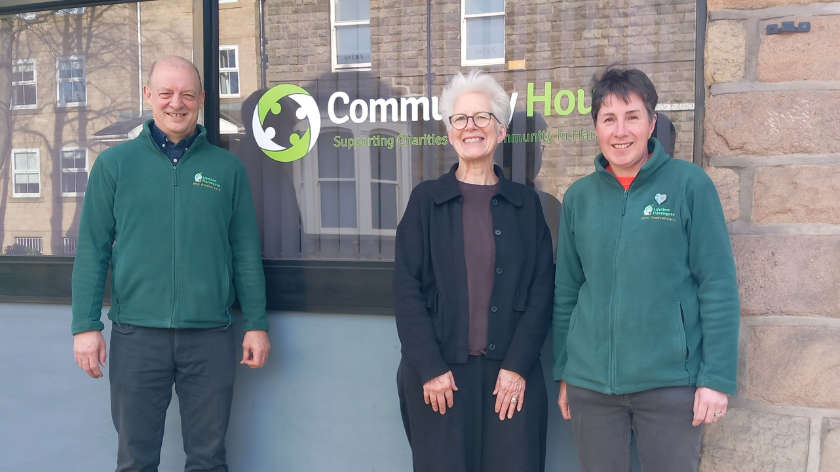
Leeds Bradford Airport has officially started construction work on its new terminal regeneration.
The privately funded £100m development, known as LBA:REGEN, will transform LBA’s existing terminal building into a modern, efficient and sustainable facility.
LBA:REGEN will deliver a 9,500 sq. mt., three-storey extension to the existing terminal, alongside a significant refurbishment of the current facilities.
Passengers will benefit from the creation of additional aircraft stands, more seating, faster security, new shops and eateries, a larger baggage reclaim area and immigration hall, and improved access for passengers with restricted mobility.
Vincent Hodder, CEO of Leeds Bradford Airport, said:
"This ground breaking is a significant moment in LBA’s history, representing the culmination of thousands of hours of planning, consultation and design.
"As one of Yorkshire’s most significant infrastructure projects, we and our passengers are immensely excited to see it develop in the coming months.
"Once complete, this project will deliver the airport that our passengers, airlines and region need and deserve.”
Work is underway on the terminal extension, with Farrans Construction delivering Phase 1 of the project.
This phase includes the construction of a new UK Border Force immigration facility and international baggage reclaim hall, as well as expanded retail and international departure lounge facilities.
Phase 2 will include an enlarged central search and check-in areas, alongside larger duty free, retail and arrivals areas. Completion of construction work is expected to be completed in 2026.

By 2030, LBA:REGEN has the potential to create 1,500 new direct jobs at LBA and 4,000 new indirect jobs.
These jobs will include a mix of roles, including amongst others entry-level apprenticeships, customer experience officers, duty managers, air traffic engineers and data analysts.
The project will also play a significant part in the airport’s Net Zero Carbon Roadmap, with the installation of new efficient heating, lighting and machinery, as well as attracting airlines to deploy their newest, quietest and most efficient aircraft at the airport.



 Over 200 fencers attend Harrogate Fencing Club sporting event
Over 200 fencers attend Harrogate Fencing Club sporting event
 Harrogate homeless charity receives four-figure grant
Harrogate homeless charity receives four-figure grant
 Police appeal after driver fails stop following A1 collision
Police appeal after driver fails stop following A1 collision
 Harrogate MP warns 'OFWAT must go' after Yorkshire Water dumps 430,263 hours of sewage
Harrogate MP warns 'OFWAT must go' after Yorkshire Water dumps 430,263 hours of sewage
 Surprise donation pays off debt for Knaresborough Forest Park
Surprise donation pays off debt for Knaresborough Forest Park
 Harrogate woman launches home decluttering business
Harrogate woman launches home decluttering business
 Starbeck dance school to perform at Disneyland
Starbeck dance school to perform at Disneyland
 New ride unveiled at Lightwater Valley near Ripon
New ride unveiled at Lightwater Valley near Ripon
 Woman arrested for arson after fire devastates Knaresborough pub
Woman arrested for arson after fire devastates Knaresborough pub
 WATCH: Harrogate pupils get surprise visit from Easter Bunny
WATCH: Harrogate pupils get surprise visit from Easter Bunny
 New owners for popular Harrogate gym
New owners for popular Harrogate gym
 Ripon students raise £8,000 for those affected by conflict and disaster
Ripon students raise £8,000 for those affected by conflict and disaster
 Vineyard near Harrogate to host food and wine fair
Vineyard near Harrogate to host food and wine fair
 Fearless 9-year-old girl to scale Scafell Pike for charity
Fearless 9-year-old girl to scale Scafell Pike for charity
 Saltergate Schools officially join Red Kite Learning Trust
Saltergate Schools officially join Red Kite Learning Trust
 Hampsthwaite Memorial Hall set for craft studio extension
Hampsthwaite Memorial Hall set for craft studio extension
 Large-scale fire at The Cricketers in Knaresborough
Large-scale fire at The Cricketers in Knaresborough
 Antiques Roadshow star to host charity event in Harrogate
Antiques Roadshow star to host charity event in Harrogate
 Harrogate MP Tom Gordon launches campaign for better rail links
Harrogate MP Tom Gordon launches campaign for better rail links
 New outdoor learning area for Harrogate primary school
New outdoor learning area for Harrogate primary school








